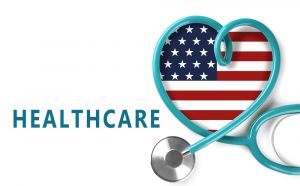The United States spends much more money on healthcare than other countries, but USA healthcare outcomes aren’t any better. Additionally, increasing healthcare expenses make it more challenging to respond to public health emergencies, and rising healthcare spending significantly contributes to America’s unsustainable national debt.
One of the most significant issues facing the United States is the high expense of healthcare, which impacts everything from the economy to people’s behavior. Medical care costs account for 90% of healthcare spending in the United States.
The USA Healthcare system is complicated, and the market determines most expenses. Hospital care accounts for 31% of the country’s healthcare costs, and high, unregulated prescription drug costs and healthcare worker incomes are more significant than in other western countries. The cost of an individual is further increased by administrative rules governing billing and coding.
Various factors influence healthcare costs in the United States, and even if American employees’ earnings have increased, their net pay has stayed the same due to the rising cost of health insurance.
These costs result from the rising price of new medications, treatments, and technology and the rising expense of caring for people with long-term or chronic medical illnesses.
High healthcare expenditures are one of the leading causes of the long-term structural imbalance between spending and revenues built into the nation’s budget and put pressure on an already precarious fiscal situation.
Overall, the high cost of USA healthcare can be attributed to the fact that it is comprised of several components, each of which demands a high price on its own and justifies its cost by condemning the costs of the others. Hospitals’ state justifications like “malpractice is highly expensive,” “uninsured people spend a lot of money,” and similar statements explain the high expense of providing healthcare.
However, this is not a straightforward chicken-and-egg puzzle. The issue is caused by practice in that almost all healthcare providers create a local monopoly (or oligopoly) for a few essential healthcare services, then use that power to demand outrageously high reimbursement rates from insurance companies for a wider variety of healthcare services.
Some of the key factors which play a crucial role and leave an impact on the cost of the USA Healthcare system are discussed below:
Costs of Prescription medication:
In the preventive and administrative care for Americans, prescription medications serve a crucial and frequently vital role. However, the price directly affects the total cost of USA healthcare.
Compared to 32 other nations, the average medicine price in the US is 2.56 times more significant, and that difference only increases. Spending on prescription drugs at retail increased to $369.7 billion in 2019, up 5.7% from the 3.8% increase in 2018.
The expense of brand-name versus generic prescription medications contributes to high costs. While 84% of prescriptions are filled annually for generic drugs, they only represent 12% of the overall budget.
We can reduce the overall cost of USA healthcare by improving accessibility to generic prescription medications. Consumers saved more than $1 trillion in the last ten years and $253 billion in 2017 because of generic pharmaceuticals.

Costs of Medical Care:

It may go without saying, but the price of medical care also contributes significantly to the cost of USA healthcare as a whole. That includes everything, including x-rays and hospital stays.
The total cost of hospital care services in 2019 was $1.2 trillion. Spending on medical and clinical services exceeded $770 billion. The cost of these services is affected by their growing use and intensity. Researchers also witness implications of high prices from provider consolidation, new medicines, the latest technology, and service delivery location.
Chronic Illness and Public Health:

The cost of treating chronic illnesses and disorders is equally expensive. Despite spending significantly more than other nations on healthcare, the United States has lower population health results.
According to the studies, among all US health issues, chronic diseases and ailments like arthritis, obesity, cancer, and heart disease are among the most prevalent, expensive, and occasionally preventable.
We can try to reduce the overall cost of USA healthcare by avoiding diseases before they manifest.
Waste and Administrative Burden:

The American healthcare system is incredibly complicated without need. Many of us have probably encountered the same services due to a lack of care coordination. Unfortunately, You might have to repeatedly complete the same intake paperwork or transfer medical documents between doctors’ offices. The result is substantial waste in the US health care system.
Duplication, poor care coordination, overtreatment or low-value care, fraud, and abuse, among other things, are all examples of USA healthcare waste. The range of projected waste in the American healthcare system is $760 to $935 billion, or 25% of all healthcare expenditures.
In the US healthcare system, reducing waste and administrative work could significantly impact the overall cost of care. Utilizing and implementing health information technology (Health IT) is one strategy to improve care coordination, lessen the stress on providers, and lower the cost of healthcare.
The American health system is very fragmented:
Studies attributed the problem to the fragmented and complicated USA healthcare system, which can unnecessarily lengthen administrative procedures and raise costs. According to a recent study, the US spent 34.2% more on administrative expenses in 2017 than Canada, which has a decentralized, publicly funded healthcare system.
Per-service pricing:

According to a cardiologist and professor of health policy at Yale School of Medicine, patients are charged according to the services they receive in the USA healthcare system. It is one of the reasons why nearly everything is more expensive which encourages the attitude, “We might as well have an extra scan”.” When hospitals, doctors, and the healthcare system are paid fee-for-service, it is in their financial interests, and the rationale is that more is better.” Due to this concept, higher consumption of many different services takes place. Whereas in other countries, people are often compensated on volume in the USA healthcare ecosystem.
Lack of Government Health Policy:

The fact that the United States government does not limit how much most healthcare providers can charge for their products and services, including insurance, medications, and medical care, makes things even more expensive.
When negotiating with several prospective payers, such as various private insurance companies, the corporations that supply and bill for health care, such as hospital systems and medication manufacturers, have more ability to keep costs high. However, there is additional pressure to meet demand when they have to bargain with a single-payer, such as the federal government, to offer their services.
Due to the system’s complexity and the unavailability of regulated medical service prices, providers are free to determine their prices. Depending on the payer (private insurance or government programs like Medicare or Medicaid) and location, the USA healthcare service’s cost might differ dramatically.
- The cost increases with improved technology.
- Medical advancements can prolong our lives and improve our health, but they can also increase spending and encourage excessive use of pricey technologies.
According to research published in the Journal of the American Medical Association (JAMA), even when there is little to no evidence to support their effectiveness, Americans tend to equate newer procedures and more modern technology with better care.
This presumption prompts patients and physicians to want the most advanced—and sometimes costliest treatment and equipment.
- A lot of Americans don’t pick their health insurance.
According to data from the KFF9, 49% of Americans obtain health insurance through employment. As a result, almost 50% of Americans don’t decide how much their insurance will cost because their employer already sets that price.
Because the cost of the insurance is deductible by the employer and tax-free to the employee, businesses are encouraged to obtain higher expensive health insurance plans. Low deductibles or office co-payments may also encourage excessive usage of services, raising demand and costs.
- The effects of inflation on the economy
As patients revisit doctors’ offices after avoiding them during the pandemic, USA healthcare costs are gradually rising, leading many people to discontinue medical care. The cost of operations, supplies, administration, and facilities is impacted by inflation. Healthcare institutions have also suffered from ongoing workforce shortages and decreasing annual salaries for healthcare professionals.
Reports estimate that while healthcare costs increased by 3.2% for the previous year, overall inflation prices increased by 8.3% in April 2022. Although healthcare inflation hasn’t yet surpassed overall inflation, some medical services and supplies have become more expensive.
Many people are considering delaying or canceling their care—as they did during the pandemic—until they can get their financial position under control because they are concerned that healthcare inflation would eventually surpass any gain in their annual income.
Patients should, however, take care of their healthcare needs as soon as possible, especially if they have chronic problems due to the delayed effect of healthcare inflation.
- Aging population: In 2022, it is anticipated that people 65 and over would make up 17% of the country’s population. By 2030, the US Census Bureau predicts that the percentage will surpass 20 percent. The average cost of USA healthcare is higher for persons over 65 than for any other age group. Thus as the population of older Americans grows, it is anticipated that overall healthcare expenditures will also rise.
What Can be Done to improve it:

The USA healthcare reform bill has also given millions of Americans access to insurance. We’ve changed to a healthcare system where anyone can get health insurance, regardless of age or physical condition, and many people who have just gotten coverage need continuing medical care.
Government should negotiate healthcare costs more actively. The large administrative expenditures that increase prices in the United States are unnecessary for their healthcare systems.
These governments can negotiate reduced prices for drugs, medical supplies, and hospital care since they are the global administrators of their nation’s systems. They may impact the therapies, patients’ access to experts, or more expensive procedures. Although consumers may have fewer options, prices are kept in check.
America can become healthier with the support of all of us, and healthcare expenditures can be reduced. USA healthcare system has to emphasize providing patients with high-quality care that enables them to recover from illness more quickly and maintain their health for longer. Meanwhile, adopting better habits can help everyone reduce their risk of numerous expensive chronic conditions.
Conclusion:
USA Healthcare lobbyists ensure that the government doesn’t control the industry, so healthcare in the United States is so expensive. We regret the high insurance cost in light of the rising cost of medications. Even if you have private insurance, your taxpayer funds are covering the growing expense of essential medications, which increases our collective costs.
The other main reason healthcare is so expensive is the industry’s immense profits, which include pharmaceutical companies with profits that rival those of central banks, huge hospital global corporations, and physician groups. It is believed that they can charge whatever they want because there is no oversight from the government. Instead of blaming the government for giving corporations free rein to turn our health into a commodity at any price, we should condemn pharmaceutical firms when they demand outrageous rates for life-saving medications.
No matter who you are—a payor, an employer, a provider, a subject-matter expert, or a consumer—we must begin by acknowledging the gravity of the situation and the fact that it is escalating rapidly. Fixing this massive system won’t necessarily feel nice. As USA healthcare providers are compelled to increase their efficiency, we will have to endure local hospitals closing. There’s a chance that some of the necessary alterations will annoy your healthcare fraternity. However, the scenario we’re in is unsustainable; the rate of increase in healthcare costs just cannot continue. This is sue requires immediate attention and action.


